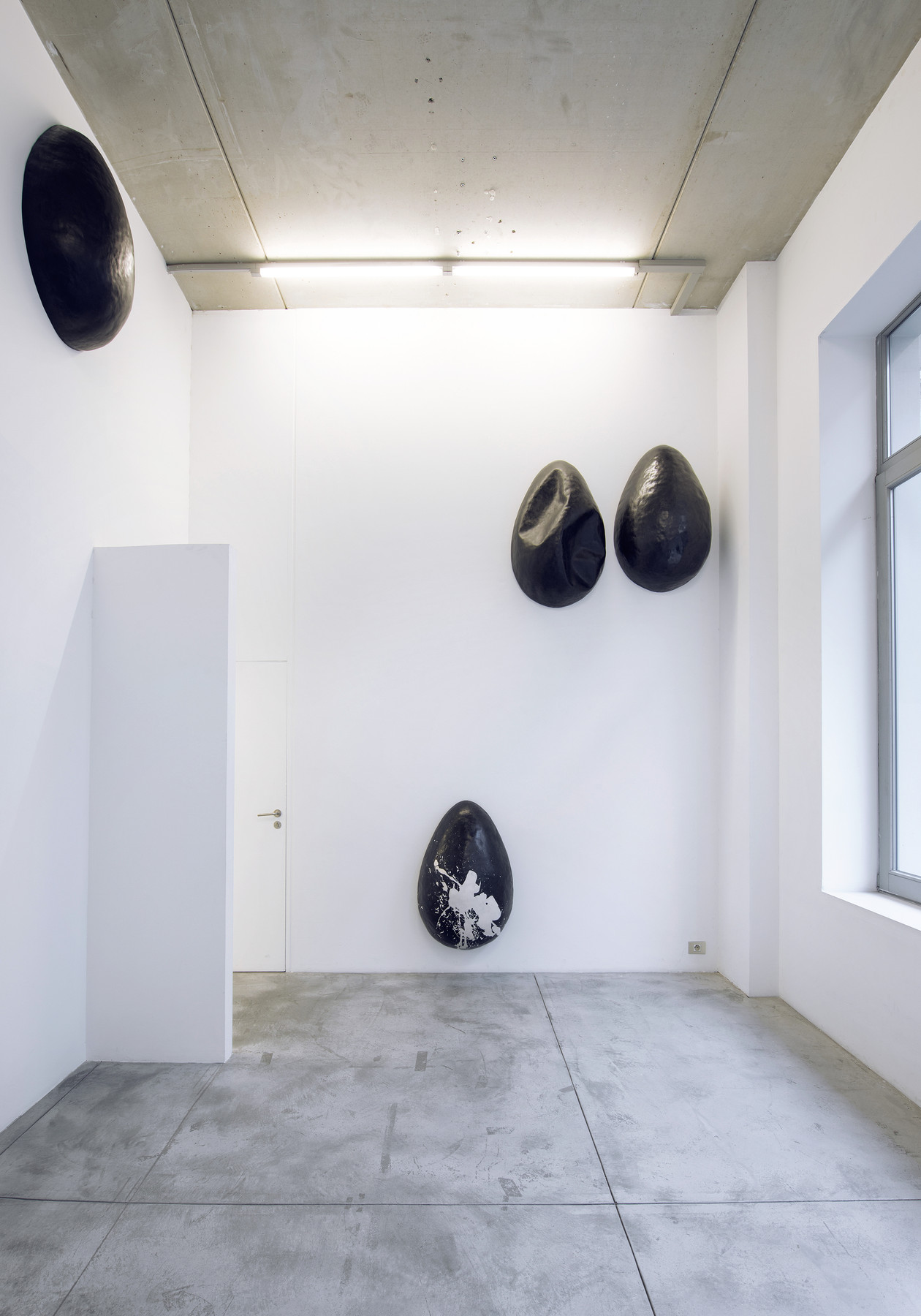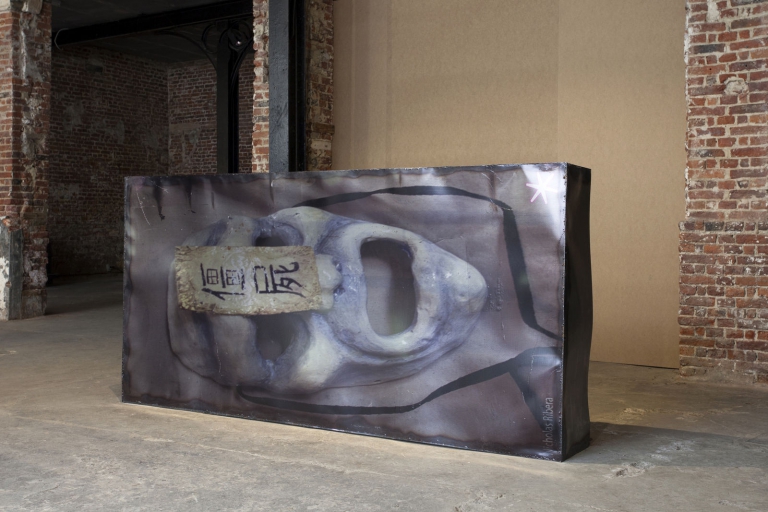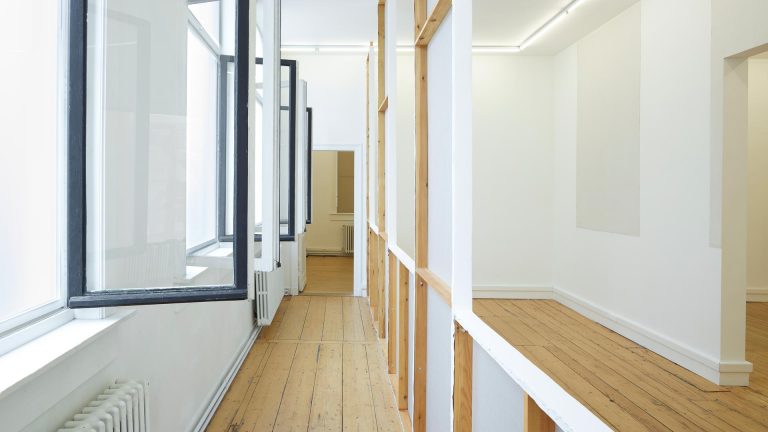Artist: Aline Bouvy
Exhibition title: Bastinado
Venue: Albert Baronian, Brussels, Belgium
Date: November 8 – December 22, 2018
Photography: Isabelle Arthuis / images copyright and courtesy of the artist and Albert Baronian, Brussels
“It is clear that the world is purely parodic, in other words, that each thing seen
is the parody of another, or is the same thing in a deceptive form. (…) An
abandoned shoe, a rotten tooth, a snub nose, the cook spitting in the soup of his
masters are to love what a battle flag is to nationality. An umbrella, a
sexagenarian, a seminarian, the smell of rotten eggs, the hollow eyes of judges
are the roots that nourish love.
A dog devouring the stomach of a goose, a
drunken vomiting woman, a slobbering accountant, a jar of mustard represent
the confusion that serves as the vehicle of love.”
—Georges Bataille, The Solar Anus, 1931
Aline Bouvy (1974, Brussels) lives and works in Brussels and Perlé. She studied at the Ecole de Recherche Graphique in Brussels and at the Jan van Eyck Academy in Maastricht. The sculptures, objects and installations that originate from her remarkable practice are difficult to pin down. Bouvy dies not restrict herself to a routine use of defined ‘disciplines’ and techniques, but explores both the limitations and the possibilities of the most diverse media. More precisely, she picks out shapes, words, colors and symbols, pulls them from their context and combines them into a new discourse – an archetypal and at the same time highly personal chain of associations. The layers of meaning are shifted over and into each other, often even literally.
With a critical eye, Bouvy analyzes society in all its dialectical tug-of-war: debauchery and decency, concealment and publicity, desire and obligation. Recognizable forms such as fertility symbols, utensils and limbs, but also colors and specific materials such as charcoal, linoleum or plexiglass, are given an aesthetic or moral dimension. Every motif in her work is like a double-edged knife. An invisible force seems to decide for us which subjects end up in a taboo and die a silent death: sexuality, physicality, decay, waste, violence. Yet these are elements that today permeate our visually obsessed mass culture. Western society seems to be lulling itself asleep on an illusionary sea of selfies and empty images, in stark contrast to what is really happening in the world.
For her second solo exhibition at Albert Baronian, Aline Bouvy gives body to the gallery space by the means of sculptures of giant feet that protrude from the walls here and there. The exposure of the feet, with accurately elborated veins and toenails, triggers a tension between intimacy, aversion and shame. In 1929, in the sixth edition of his Documents, Georges Bataille described the big toe as the part of the body that fundamentally differentiates man from his kindred, the apes. The toes
function as a foundation for our body, which, like a tree, rises up in perfect erection towards the sun. And yet, throughout (art) history, feet were often presented in a denigrating manner as obscenities, overgrown with warts. These feet are, however, virgin white, like classical Greek sculptures in marble or plaster. Bouvy made them in Jesmonite, a natural substitute for resin that consists of powdered stone. The same material is often used to produce large, light and yet sturdy decor pieces in the theater and cinema world.
The title of the exhibition, Bastinado, refers to a torture practice in which bare feet are struck with a stick or whip, phallic power symbols par excellence. This corporal punishment is particularly painful because several nerve bundles come together at the bottom of the feet. Yet this flagellation leaves no visible injuries to the victim. Hence, the violence that has been done remains hidden, as is the case with psychological or social distress, equally too easily denied. These unprotected feet, no matter how outsized, give the gallery space an unexpected fragility that both moves and worries.
Bouvy’s spatial intervention further includes a number of gigantic, shiny piercings that are attached to the walls at various points and form a sort of reinforcing armor for the vulnerable feet. The walls of the gallery are transformed into a skin, complete with hidden corners and sides. Just as piercings are usually placed in places where the human body is exceptionally sensitive to excitement – usually hidden –, the selected places are charged with a similar sexual stimulus.
The mouth is also an exceptionally intimate part of the body: it is the big hole in our head, the portal between ‘outside’ and ‘inside’. It is just as well our soundbox for speaking, for interpersonal communication and the production of sounds. A tool that we push into this cavity every day is the toothbrush. Bouvy shows a series of drawings with the toothbrush as a modular element with which she forms a series of twelve Roman numerals. This idea is based on the generally accepted order that structures society: twelve months in a year, twelve hours on a watch.
Finally, in the rear space of the gallery, the artist presents a constellation of egg- shaped shells that were hung from the top down on the walls. The eggs refer to a full belly, pregnancy and the primordial female symbol for fertility. But here, presented alongside a two-dimensional image containing a cross section of male genitals, these black eggs, stained and ill-used, embody rather the vicious rebirth, the seclusion of a potential universe one would prefer not to see being hatched.
-Melanie Deboutte




























